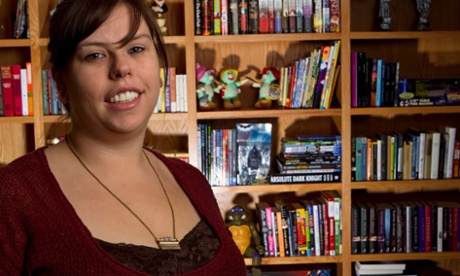
“Sorry – no self-published books accepted.” How many authors have been confronted with those words? I certainly have. It’s a prime example of what has been dubbed the self-publishing stigma. But as the sector grows, shrugging aside suspicion and hostility, will this negative image fall away? Has it already begun to do so?
I jumped into the game in late 2010, when the concept of being an indie author was still relatively new. Like most others at that time, I tottered about, toddler-like, trying to find my way through this new and strange landscape.
It was in these early stages that the first few success stories began to emerge: self-publishers such as Amanda Hocking and John Locke became founder members of what is affectionately called the Kindle Million Club – writers who have shifted seven-figure quantities of ebooks. Self-publishing was spotlit as something not only viable but lucrative. These stories, among others, spurred thousands of authors to join the publishing fray. “No publishers needed!” might as well have been the battle cry.
The brutal truth is that when you can publish anything, people will do exactly that. The market was flooded with indie literature and, sadly, a large percentage of it was substandard. Bad editing, awful covers, and mediocre content were rife. Advice was scarce, the methods many and varied. It was an exciting time, but a muddled one. Just as self-publishing was trying to shrug off the mantle of vanity publishing, it earned itself a new reputation – for low quality. Lo and behold, the self-publishing stigma was born.
It’s a black mark that has had many different manifestations over the last few years. Most common is reviewing policy: many critics of all types have closed their doors to self-published books, some because they were inundated by requests and others because they were tired of wasting time on unedited books. Traditional authors, such as Jonathan Franzen, have decried the rise of indie authors. You might even remember Waterstones changing its policy on book events in 2012, after receiving a number of complaints about harassment of customers by authors selling books on the shop floor. And of course, most literary awards will not accept self-publishers or small-press books – due to the variable quality and the sheer amount of entries they would receive.
I can see their point, and I don’t blame them. The self-publishing boom has produced a lot of low-quality literature, and you only have to trawl the shelves of Amazon and other stores to see that it’s still coming. But it’s surely shortsighted to think that all indies should be treated the same way.
As well as the indie authors who don’t spend time, effort, and money crafting professional products, there are plenty who do. The availability of advice has played a key role in this change. Whole new support industries have sprung up, offering everything from design to editing and marketing support. Indie authors have begun to share tips and tricks, while the Alliance of Independent Authors has pushed their cause with an Open Up To Indies campaign.
The results are clear to see: the media this spring has been been abuzz with stories of self-publishing success. Jasinda Wilder is one recent example, landing a seven-figure deal with Berkley Books. Alison Baverstock, a professor of publishing at Kingston University, has also released research correcting many misconceptions about self-publishers. Presenting her findings to the Westminster Media Forum last year, she pointed out that indie authors were finding new readerships by filling gaps in popular fiction left by traditional publishers.
Many of them have turned to the writing platform WattPad, on which readers – many of them very young – now spend 9bn minutes each month. Every day, 64,000 stories are uploaded, which adds up to 70m stories since the site was founded. A huge proportion of the authors publishing on WattPad are indie authors. Significantly, they are predominantly young, so fall outside the demographic identified by Dr Baverstock’s research: that nearly two-thirds of all self-publishers are aged 41 to 60.
The stigma may not have gone – it may never vanish entirely - but it’s beginning to fade, and that makes me happy. As publishers are beginning to demonstrate with those six and seven-figure signings, it’s increasingly short-sighted to ignore the indie author.
- Ben Galley is the author of the Emaneska Series of fantasy novels, and a new YA western fantasy series, the Scarlet Star Trilogy. He’s also a self-publishing consultant at www.shelfhelp.info.

